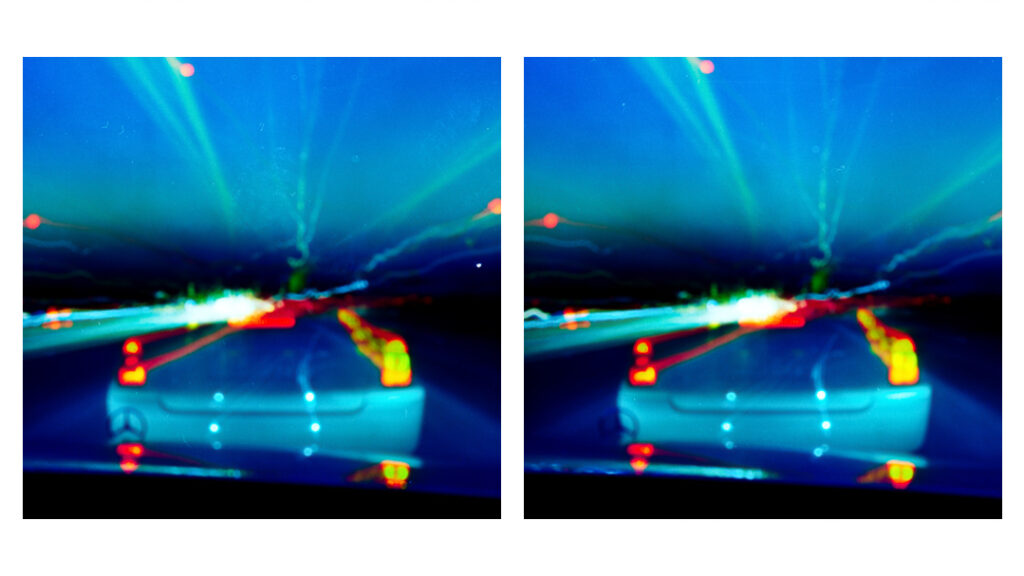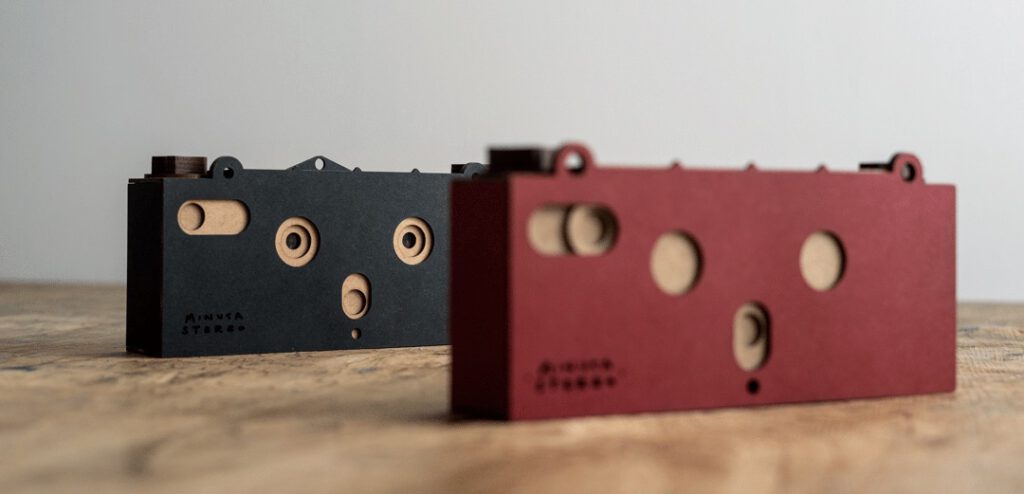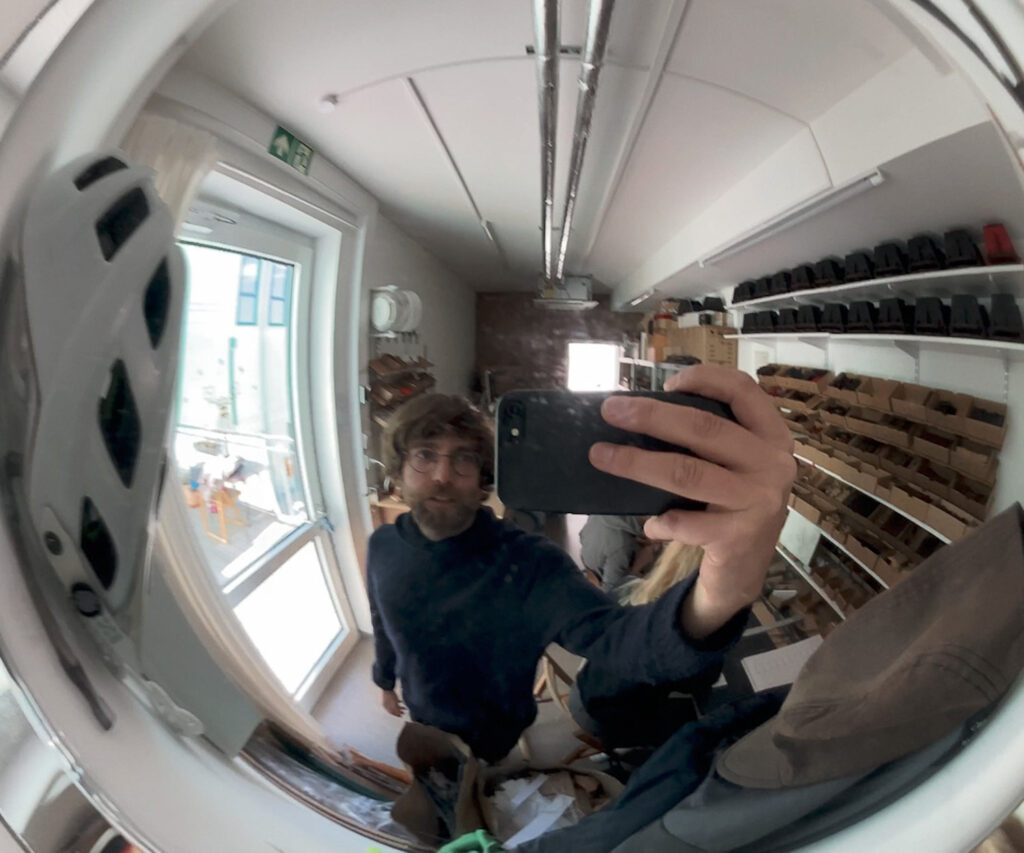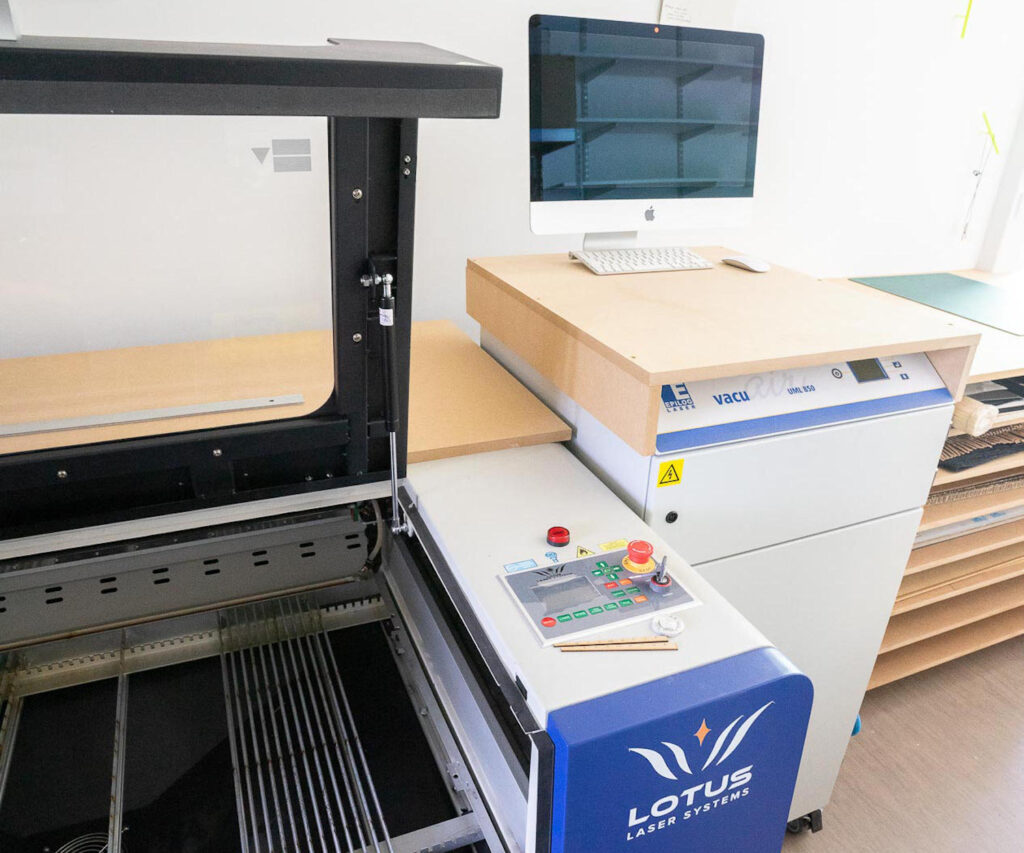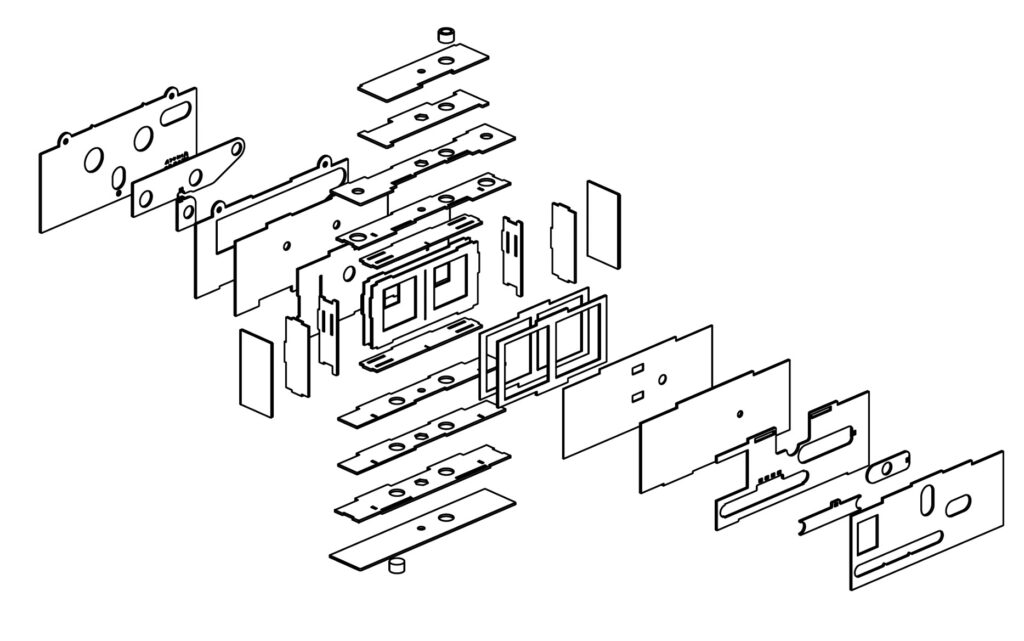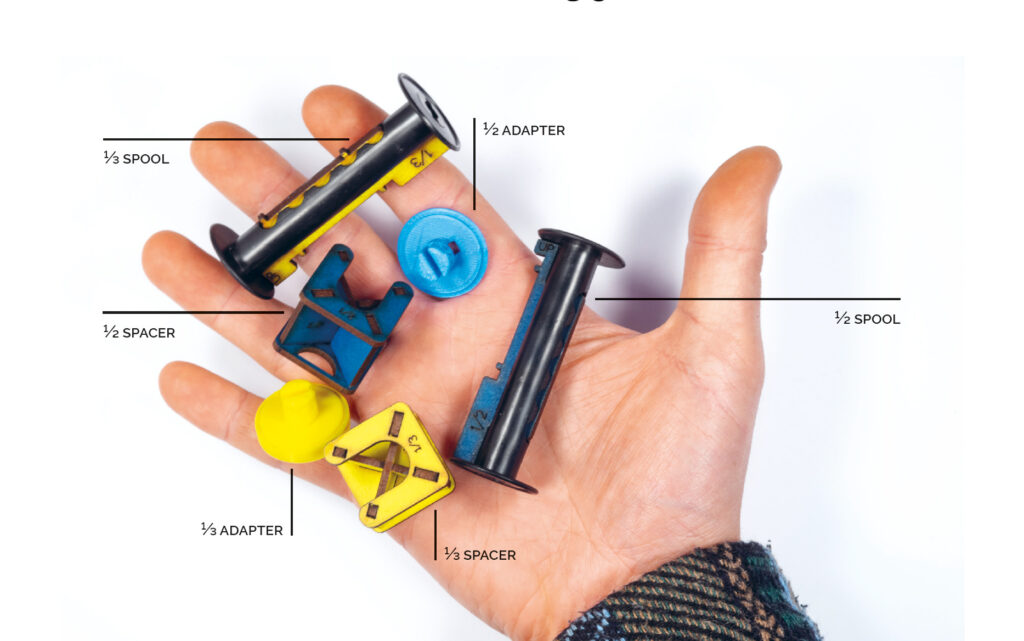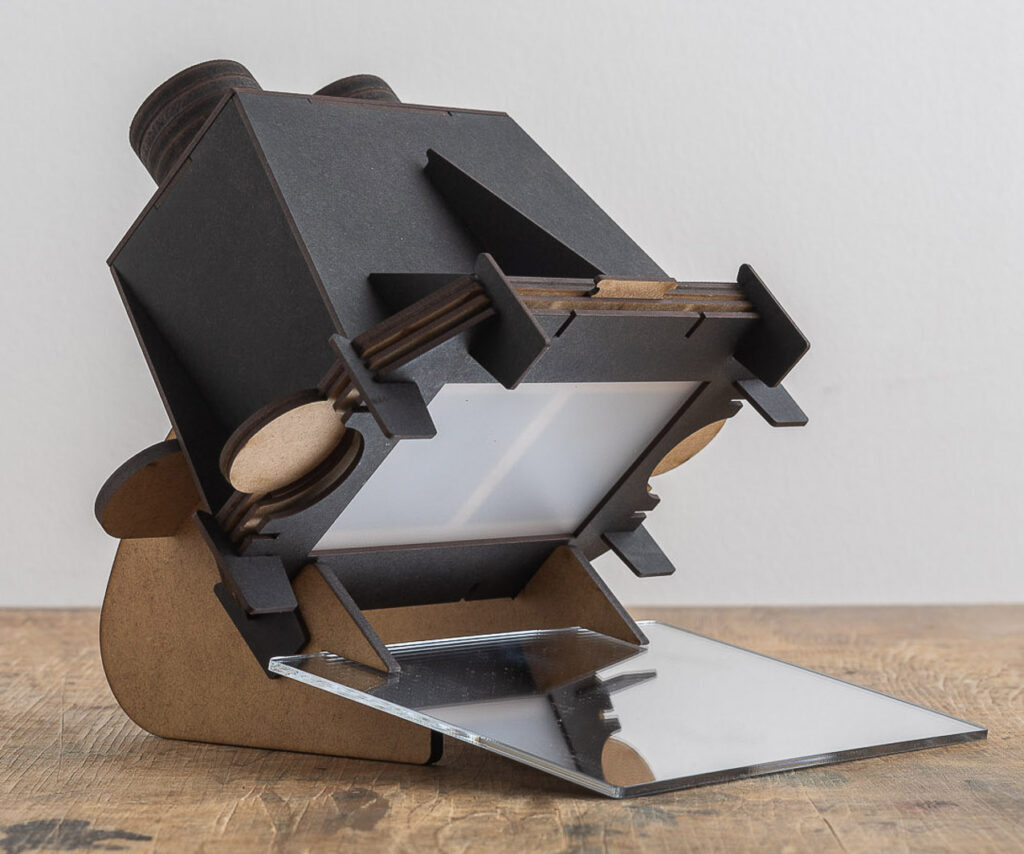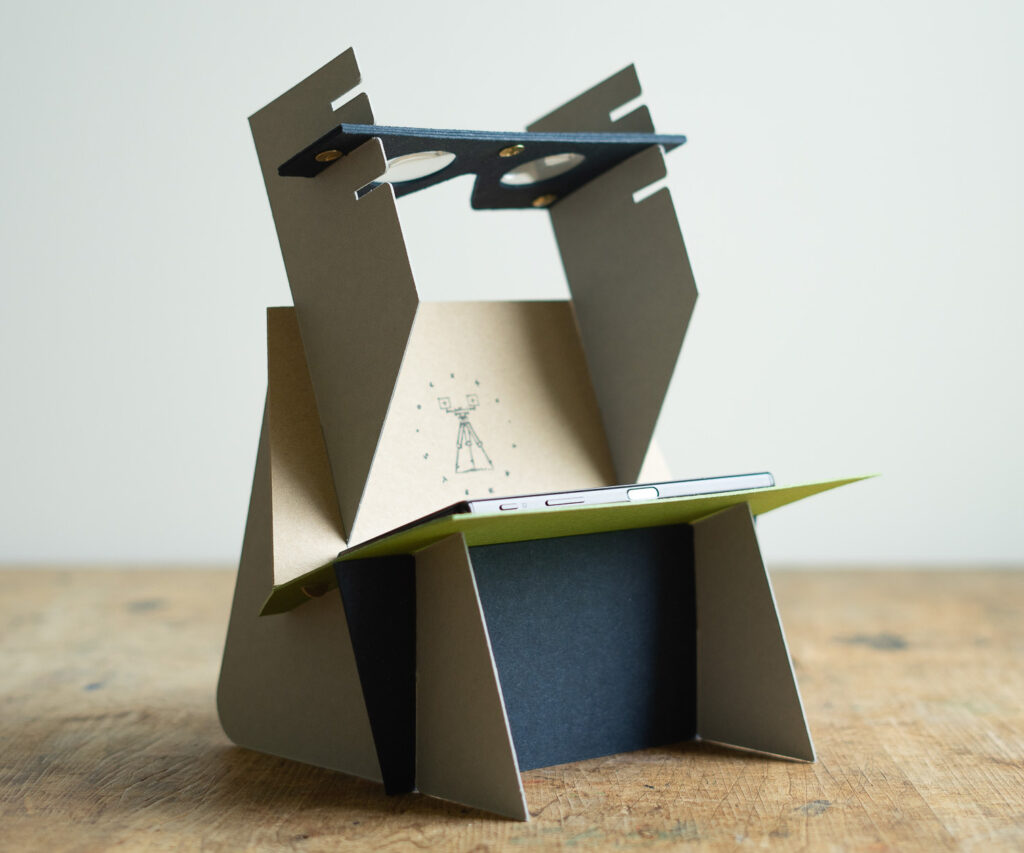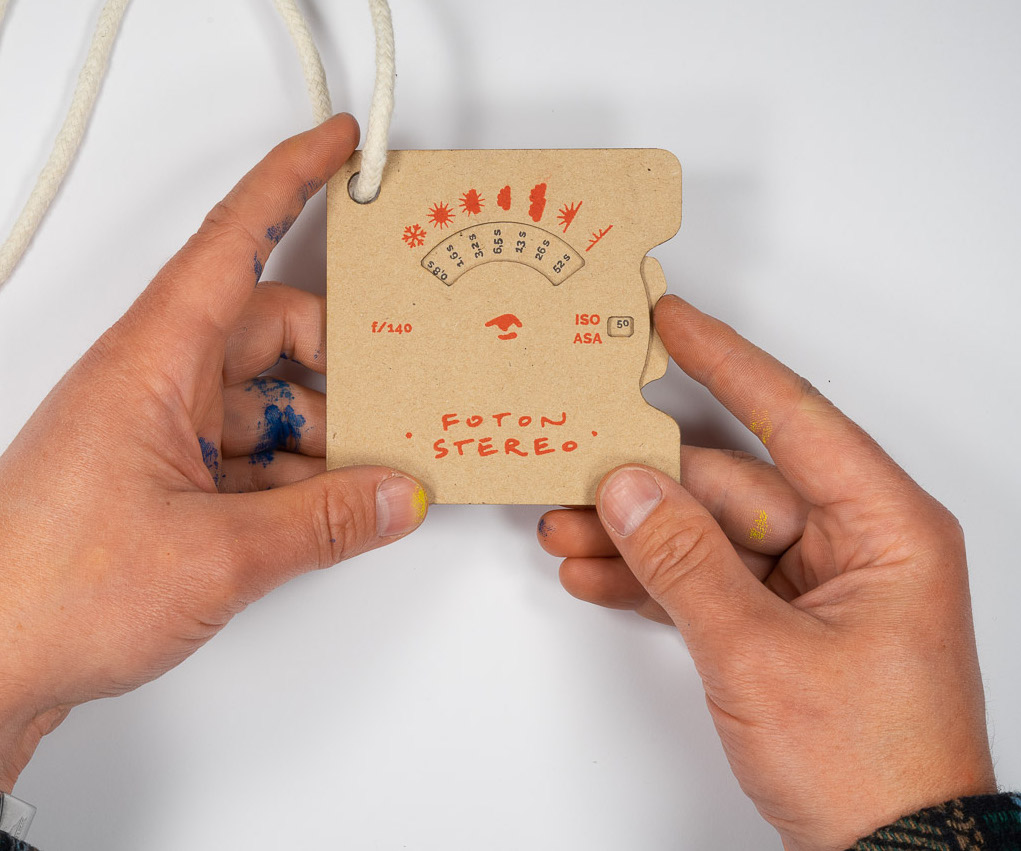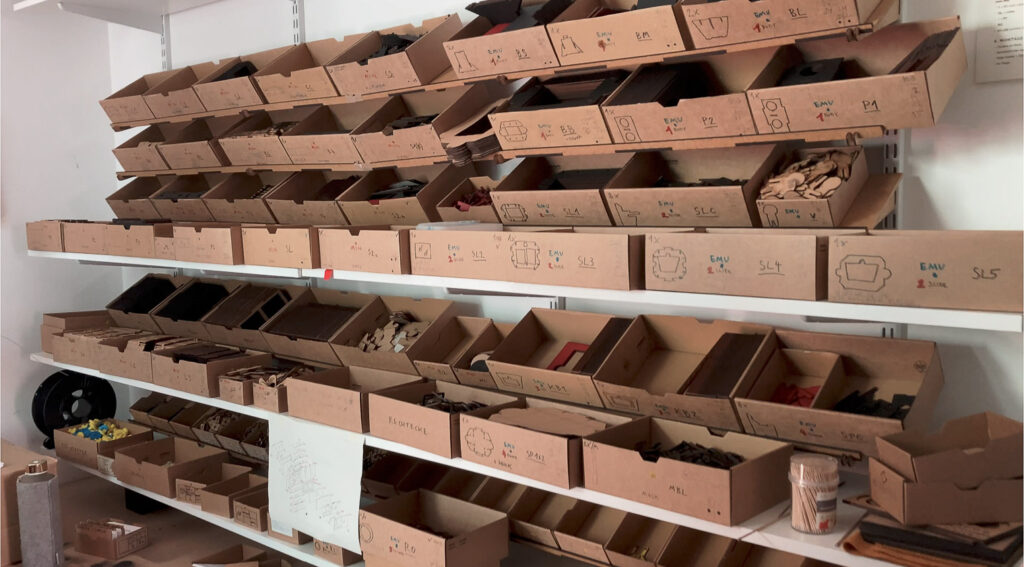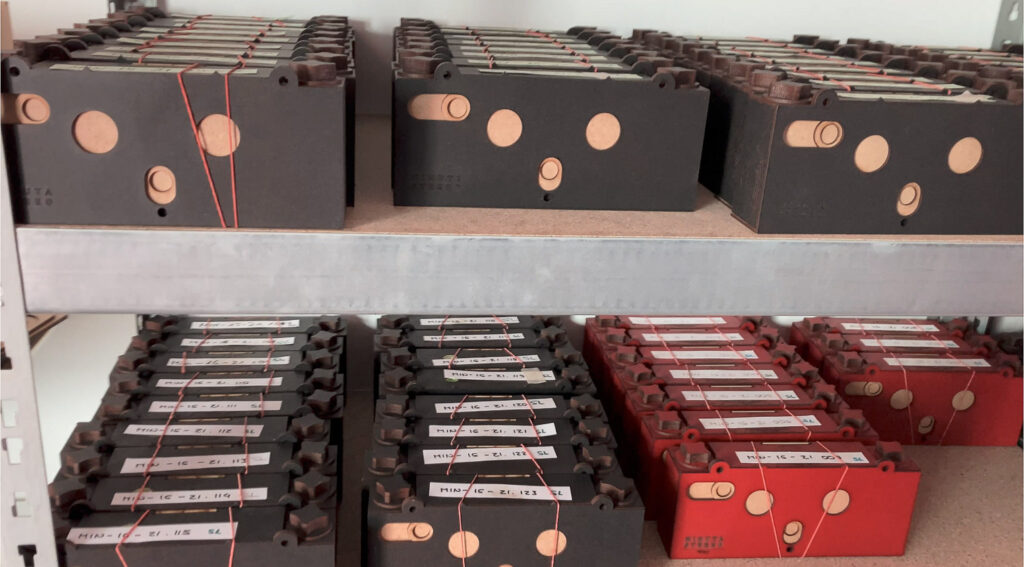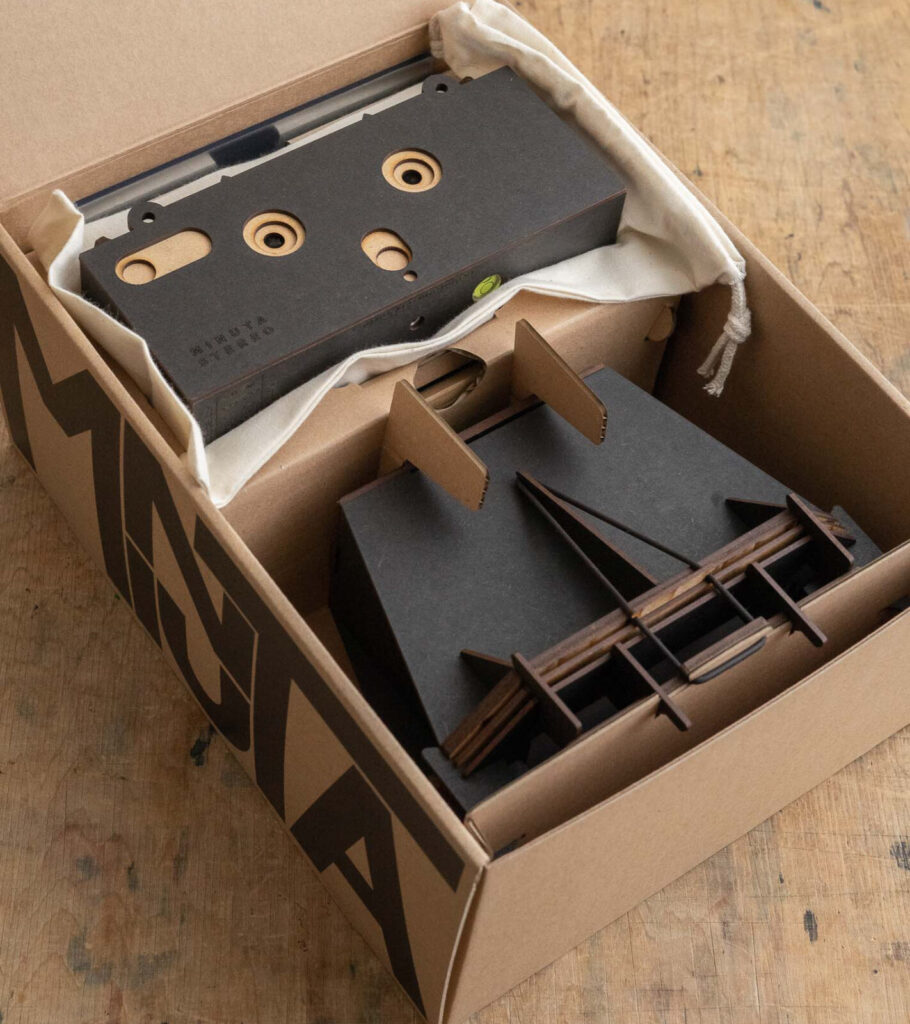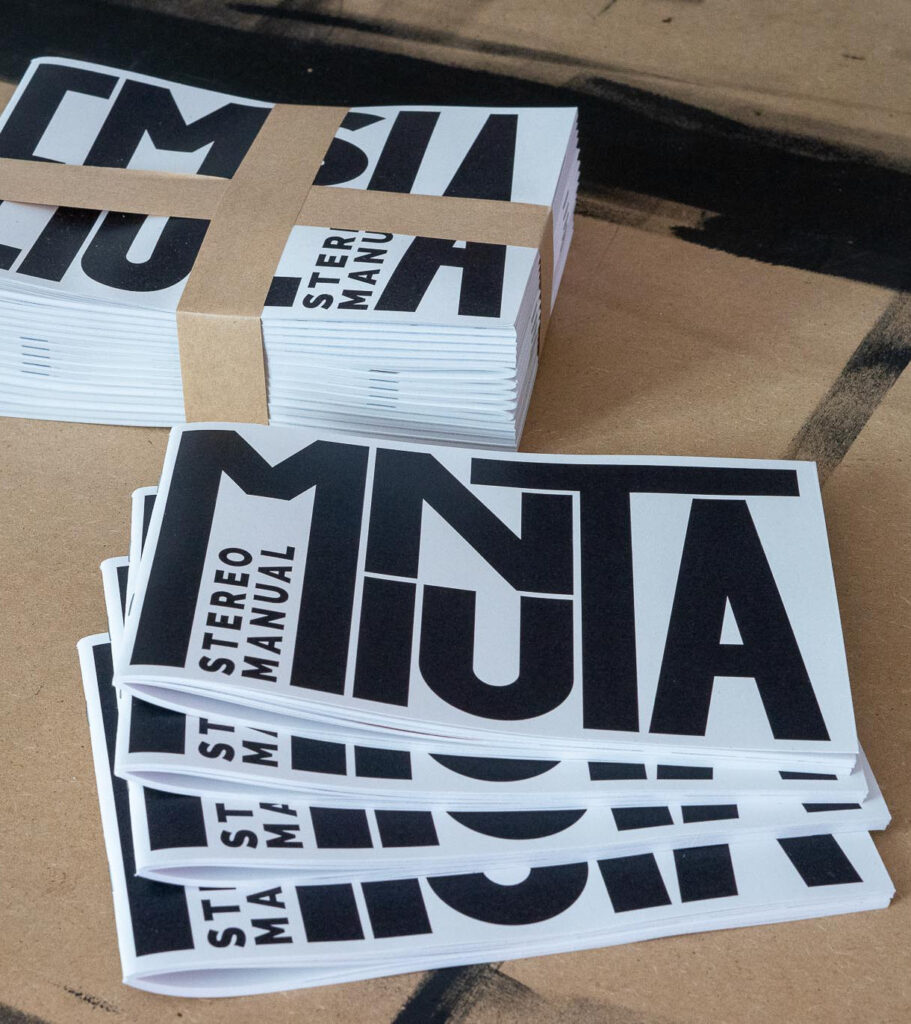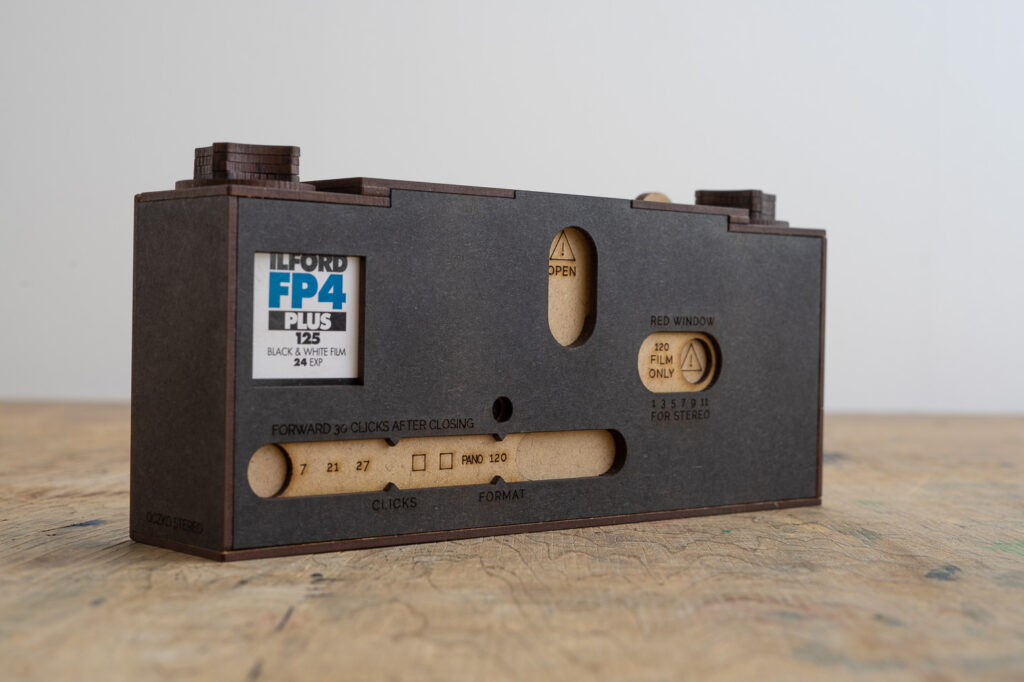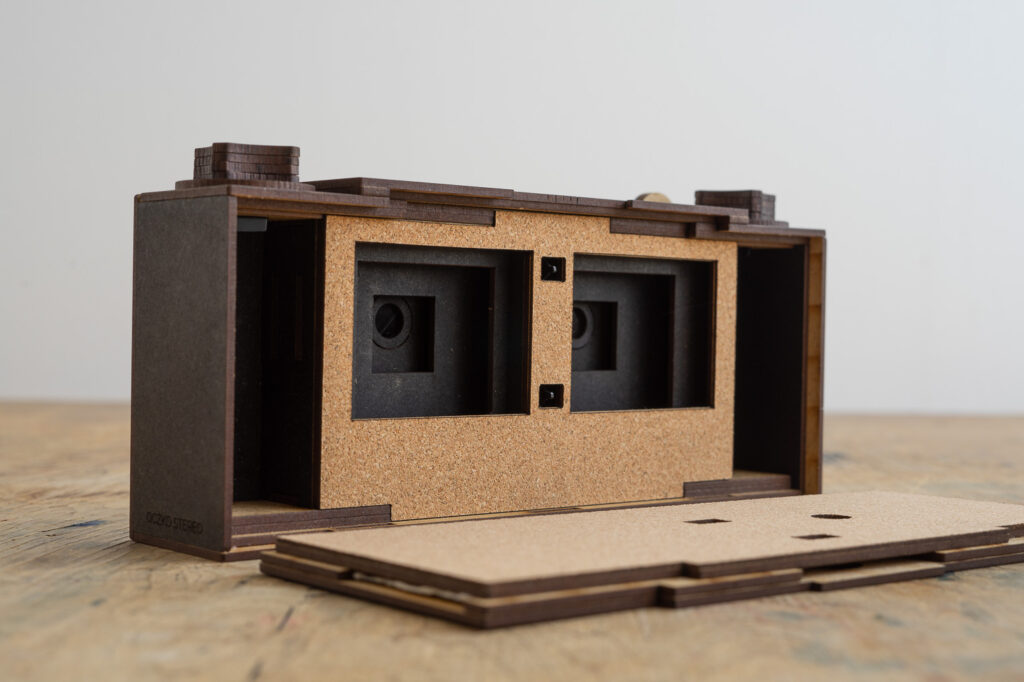MINUTA STEREO — a new pinhole stereo camera
written for the stereosite by Dominik Oczkowski, Germany
It was several years ago, that I discovered what stereoscopy is, how it supports my work as an architect and how rewarding stereo photography can be. I realized that I can use my knowledge of stereoscopy to develop stereo cameras and stereoscopes. I started by mounting two digital cameras for a stereo rig. But I also had access to a dark room and learned the entire process of analogue photography. During my studies I learned how to build models with laser cut parts. So I came up with the idea of developing an analogue stereo pinhole cameras. The first stereo photographs from my prototypes enlarged on light sensitive paper were very experimental, very interesting and very three dimensional.
After some years I decided to create a crowdfunding campaign to develop my first commercial product. I imagined a camera that would encourage more photographers to explore stereoscopy. After some more months of intense work, I was ready to launch.
In 2020 the MINUTA STEREO Pinhole Camera campaign got successfully funded on Kickstarter within one month. It made me very happy to see, that there was a lot of interest in a new camera adding stereo to pinhole photography. Over 160 backers believed in this project and invested their money, so I could set up production of my first product. In spite of a delay of some months, I’ve delivered all rewards shipping around the globe.
After the successful campaign, I invested the raised funds in setting up my small workshop for optical devices. The biggest and most expensive machine was the laser cutter I needed to cut out all the parts from MDF sheets. It’s connected to a large exhaust fan and a CAD computer. Another important thing I was missing, was the furniture to work on and to store all the materials. In the end I built it myself from simple wooden boards. Only custom made pieces would fit into my small space.
I’ve also invested in good lighting and a simple 3D-printer.
Then I started finalizing the product and checking my CAD drawings again and again. The biggest problem with the prototype was that it had way too many features. Instead of making a simple stereo camera, I’ve packed all the knowledge I gained during the last years into my first product. I’m afraid I’ve made the envisioned easy start to stereoscopy a bit complicated. The biggest lesson I’ve learned while fulfilling the rewards, was to start with simple things.
But I had promised a stereo camera for both medium format and 35 mm film with an optional rise & fall function, many different image formats, a 2D mode, precise viewfinders, many magnetic parts and some gadgets like pouches or holders. So, the main reason for my delay in delivering the rewards, was that I had to develop a lot of different special parts for all the different options.
In addition to the camera, there were add-ons the backers could choose from: two different stereoscope models, an exposure calculator and six different slide mounts. Everything had to be designed, planned, produced, stored and packed.
So it was important to establish a clever workflow for exporting my CAD drawings, painting the MDF-sheets, laser-cutting the parts and organising them in labeled trays. Then I prepared exploded views and assembling manuals. The final design of the camera consists of over 100 parts including magnets, nuts, levels and many cork parts which had to be ordered and prepared.
After most of the cameras were already built I started do develop the product manuals and the packaging.I’m very grateful for the help of my neighbours: the two girls from FuturePlayground helped me with the graphic design, the boxes and the booklets. Then I started packing and shipping the rewards. In the end I’ve delivered over 120 cameras, 90 stereoscopes, 1400 slide mounts and many smaller add-ons.
Now it’s in the hands of my backers. I am extremely curious to see what the people will do with this camera.I’ve created a Facebook Group to share and discuss images shot with the camera and the #minutastereo hashtag on Instagram.
Dominik Oczkowski (Munich, Germany)
Dominik Oczkowski is an architect, stereographer, model builder and product designer based in Munich and Cracow.
After photographing architecture and stage design models in 3D, he started developing stereo cameras and stereoscopes. Dominik is searching for the grain and the bokeh in the depths of spatial photography.
Website: oczkostereo.eu
Instagram-profile: oczkostereo.eu
Facebook-group: Minuta Stereo


